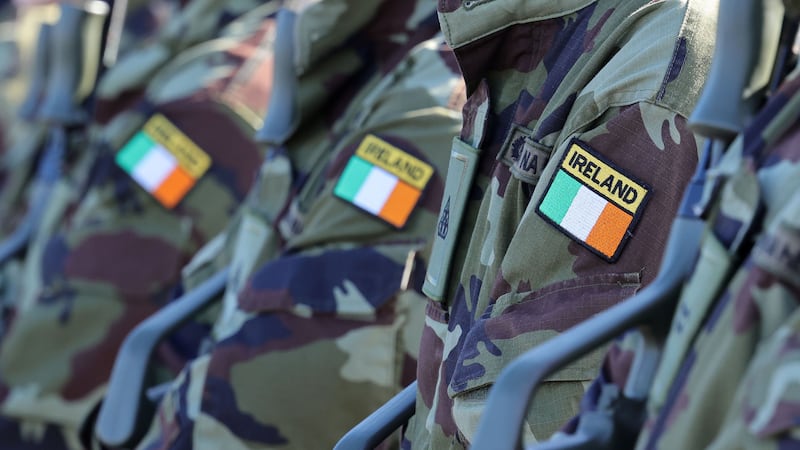IRISH STUDIES:THIS IMMENSELY valuable study offers an innovative, productive, and genuinely exciting investigation of the anxieties and fault-lines running through 19th-century Irish Catholic novels, writes Rachael Sealy Lynch.
Beginning with Moore's Memoirs of Captain Rock, Nolan shines the spotlight on an array of neglected narratives that lead us to a fascinating re-examination of Joyce's agenda.
In the preface she suggests a necessary correction of course, steering us away from Anglo-Irish Gothic and stressing that these novelists should be treated as realists rather than tenants of the Protestant imagination.
That Joyce is the heir to Catholic intelligentsia novels such as William O'Brien's When We Were Boys (1890) has been acknowledged in recent scholarship, as have the tensions on which such fiction is based: the narrow-mindedly oppressive thinking of the new Catholic middle-class is subject to inspection and derision in these novels, but the potential for change is inherent at a time during which Irish society was in such a state of flux.
Nolan builds on and then significantly expands previous inquiry; the amplitude, richness, and depth of her interrogation are both satisfying and convincing. She follows a chronological path to Joyce from Moore through the allegorical Irish national novel, the pastoral novel, and the intelligentsia novel.
Perhaps the most illuminating aspect of this study is the way in which Nolan scrupulously attends to the many complexities straining beneath the surface in the novels under discussion. Delicately probing the fibres of ambivalence, paradox, and discord, she investigates and connects such antithetical pairings as sentimentality and terror, past violence and modernisation, collective identity and individual consciousness, spirituality and materialism. Rather than attempting to reconcile incongruities, such as the relationship between Moore's sentimental Melodies and Captain Rock, the potent signifier of collective demotic indestructibility, Nolan uses such difficulties as a starting point from which to investigate the beginnings of middle-class identity formation.
Another great strength of this investigation lies in the way in which a small repositioning of the traditional spotlight of inquiry results in a new illumination of the material.
For example, a typical reading of Kickham's Knocknagow focuses upon what is read as the author's de Valera-like sentimental nationalist haze, bypassing the vivid representations of earlier violence that also exist in the text. However, Nolan adds a complicating twist, focusing on and noting the discordant note struck by such a pairing, and suggesting that Kickham is well aware of the traumatic fallout caused by Ireland's violent history.
Suppression is the price of survival, and Nolan argues provocatively that living the future requires the sanitisation and recreation of the past as it should have been rather than as it was. The irony of de Valera himself having missed this subtext is great; he drew inspiration from Knocknagow for his famous vision of a nation composed of "cosy rural homesteads", while Kickham himself painted a far more complicated picture.
That Nolan has here struck a nerve is evident when we contemplate the ways in which our national obsession with the mythic past is alive and well in more recent popular culture.
Take the television show Ballykissangel; embedded within the up-to-the minute spoof of contemporary Irish ways and laws lurked something unexpected: a poignant yearning for what Don Quixote would have called a less "detestable age", a golden past where community concerns were placed above individual desires and the roaring of the tiger-striped economy, and where comforting myths and stereotypes actually continued not merely to survive but to flourish.
In a similar thought-provoking twist, Nolan cites the revellers in search of a little painless spiritual book-keeping in Grace to show that Joyce, heir to and familiar with the novels under discussion, offers a realistic depiction of a country moving slowly but surely towards consumer culture and future capitalist development, one in which capitalism co-opts Catholicism to its own ends.
It should be added that Nolan's scholarship is most thorough and meticulous, her writing style fluent and accessible. The early stages of the investigation are demanding, as she invests a great deal of time and care in the plotting of its co-ordinates. However, the resultant mapping of this little-travelled terrain, and the illumination of the dark places, are well worth the effort.
Rachael Sealy Lynch is Associate Professor of English at the University of Connecticut. She is currently working on a book on class, gender, and identity in Jennifer Johnston
Catholic Emancipations: Irish Fiction from Thomas Moore to James Joyce By Emer Nolan Syracuse University Press, 240pp. $39.95










